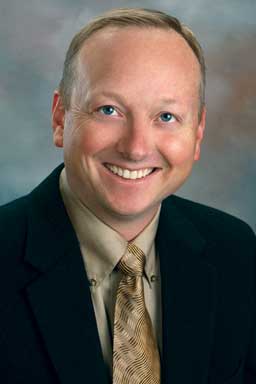President’s message: Meaningful work, membership with purpose – defining the AASV
My kids recently learned some new words courtesy of the Blue Collar Comedy Tour. This gave their mother and me the opportunity to explain why some behaviors and language are out of line in our house! But it also made me consider just how funny some of our own food-animal-medicine language might be to folks outside our profession. With a tip of the hat to Jeff Foxworthy, here are a few definitions courtesy of the pig people:
If you think going green means bidding on the John Deere Gator at the AASV Foundation Auction, you might be a swine vet.
If you think semantics describes the management of a boar stud, you might be a swine vet.
If your idea of sensitivity training is updating your bac-t pivot table, you might be a swine vet.
When your client talks about “arming a sow” and you know she didn’t teach the old pig how to fire a rifle, you might be a swine vet.
And if you know PAMTA isn’t a brand of diapers but may resemble the filled contents of one, you might be a swine vet.
But beyond our unique language, as an officer of the AASV for the past 3 years, my appreciation has increased for the tremendous experience and wisdom of our members as they promote education, share knowledge, and devote time and energy to the issues of our industry through active participation on the various AASV committees. In October, the AASV committee chairs, officers, and staff met in Perry, Iowa, for our annual committee leaders meeting. At this meeting, each of the committees updates the group on their recent activities and plans for the next year. It is also a chance to review the successes and the challenges of our organization, and how we might be more intentional about implementing better programs for education and member development. For instance, the PRRS Task Force will be working to foster communication and idea sharing among the leaders of the various area PRRS projects. We have great thinkers and doers throughout our membership – committees are an important vehicle for tapping into those talents in order to better our profession.
If a stranger to our organization were to attend our annual meeting, what would they determine is most important to us? Their first impression would be that committee work is a great priority – Saturday morning is dedicated to the committees. Conducting committee work in that time slot has been very constructive, since any points for action that arise from Saturday can be addressed just 3 days later when we hold our spring AASV Board meeting. This makes for efficient use of AASV dollars and members’ time, since most attend our education meeting.
These are the 17 committees of the AASV and a sample of their recent activities, available at www.aasv.org:
Communications – welcome video, image library, member directory, e-Letter, podcasts
Nutrition – agenda for pre-conference nutrition seminar
Pork Safety – sow injection-site survey, summary of Salmonella research
Advanced Techniques – hands-on “wet lab” education
Foreign Animal Disease – pre-conference workshop on FAD, member information
Pharmaceutical Issues – antimicrobial and drug use, FDA actions, report to AASV Board
PRRS Task Force – research priorities, terminology document
Swine Health – new and emerging diseases, tools for objective assessment
Human Health and Safety – awareness and information materials for members
Pig Welfare – issues and legislative actions, foster member awareness
Student Recruitment – intern opportunities, graduate survey, FFA convention, and college visits
Boar Stud Biosecurity – promote research and share information on boar stud health issues
Collegiate Activities – student presentations at annual meeting, support AASV student chapters
Membership – promote expanded AASV membership
Environment – develop education materials about pig-farm environmental issues
Swine Influenza – investigate changes in vaccine development, pH1N1
Operation Main Street – collaborate with NPB to target US veterinary students
How are committees structured and how can you get involved? Nominations and volunteers for committees may be received by the executive director or communications director of the AASV, or you can visit with the committee chair. All appointments are for 3 years, and are made by the AASV Executive Committee. Every committee has a multiple of three appointed members, and one third of the members’ terms expire every year. Members may be nominated or volunteer for a second 3-year term. Committee members elect a chair annually, and meet at the AASV Annual Meeting. Any additional meetings are at the discretion of the committees themselves and according to their schedule of activities. Most communication occurs via e-mail or occasional conference call throughout the course of the year.
Thank you to the AASV members involved on our organization’s committees! We are all grateful for your service. And I encourage every member to identify a committee that interests you and jump on in. You will benefit the work of the AASV, forge new professional relationships, and develop greater understanding of swine veterinary issues.
